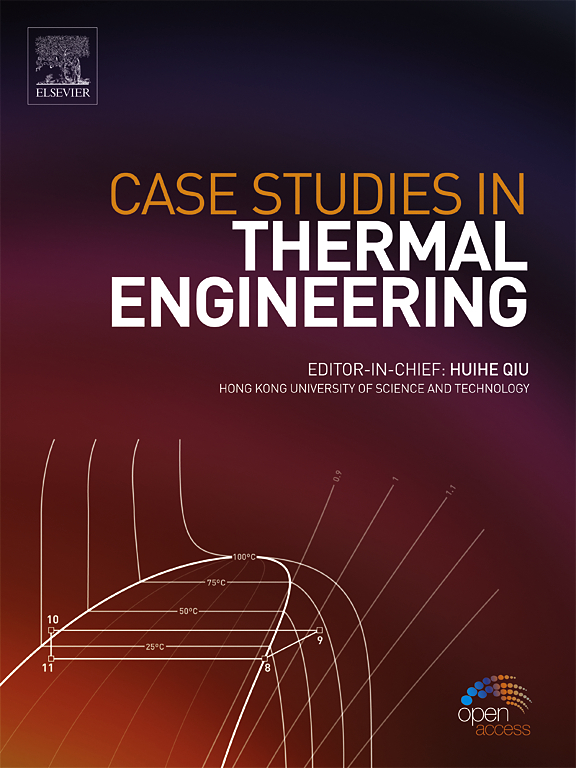多热源耦合洗浴热水系统优化研究
IF 6.4
2区 工程技术
Q1 THERMODYNAMICS
引用次数: 0
摘要
为了降低与太阳能和空气源热泵热水系统耦合的压缩空气系统的运行能耗,利用 TRNSYS 建立了一个模型,并采用田口方法对影响系统能耗的四个因素进行了实验设计。实验结果的主效应和相关统计分析显示,影响系统能耗的关键因素依次为:太阳能集热器面积>;热泵机组容量>;蓄热水箱容积>;太阳能集热器安装角度。与传统的全因素正交方法相比,田口方法减少了正交实验次数,同时有效预测了最佳参数组合,从而为耦合系统提供了更高效、稳定和经济的设计方案。根据确定的最佳参数组合,对系统进行了优化,使太阳能年保证率从 19.52% 提高到 37.26%。此外,年运行能耗降低了 12.45%,预计每年可节约成本约 34,000 元。该研究结果为多能源互补热水系统的设计和优化提供了宝贵的参考。本文章由计算机程序翻译,如有差异,请以英文原文为准。
Optimization study of a multi-heat source coupled bathing hot water system
To reduce the operational energy consumption of a compressed air system coupled with a solar and air-source heat pump hot water system, a model was established using TRNSYS, and the Taguchi method was employed to design experiments for four factors influencing the system's energy consumption. The main effects and relevant statistical analyses of the experimental results revealed that the key factors influencing the system's energy consumption, in order of significance, are: solar collector area > heat pump unit capacity > thermal storage tank volume > solar collector installation angle. Compared to conventional full-factor orthogonal methods, the Taguchi approach reduced the number of orthogonal experiments while effectively predicting the optimal parameter combinations, thereby providing a more efficient, stable, and economical design solution for the coupled system. Based on the identified optimal parameter combinations, the system was optimized, resulting in an increase in the annual solar energy assurance rate from 19.52 % to 37.26 %. Furthermore, the annual operational energy consumption was reduced by 12.45 %, leading to an estimated annual cost savings of approximately 34,000 yuan. The findings of this study offer valuable reference for the design and optimization of multi-energy complementary hot water systems.
求助全文
通过发布文献求助,成功后即可免费获取论文全文。
去求助
来源期刊

Case Studies in Thermal Engineering
Chemical Engineering-Fluid Flow and Transfer Processes
CiteScore
8.60
自引率
11.80%
发文量
812
审稿时长
76 days
期刊介绍:
Case Studies in Thermal Engineering provides a forum for the rapid publication of short, structured Case Studies in Thermal Engineering and related Short Communications. It provides an essential compendium of case studies for researchers and practitioners in the field of thermal engineering and others who are interested in aspects of thermal engineering cases that could affect other engineering processes. The journal not only publishes new and novel case studies, but also provides a forum for the publication of high quality descriptions of classic thermal engineering problems. The scope of the journal includes case studies of thermal engineering problems in components, devices and systems using existing experimental and numerical techniques in the areas of mechanical, aerospace, chemical, medical, thermal management for electronics, heat exchangers, regeneration, solar thermal energy, thermal storage, building energy conservation, and power generation. Case studies of thermal problems in other areas will also be considered.
 求助内容:
求助内容: 应助结果提醒方式:
应助结果提醒方式:


